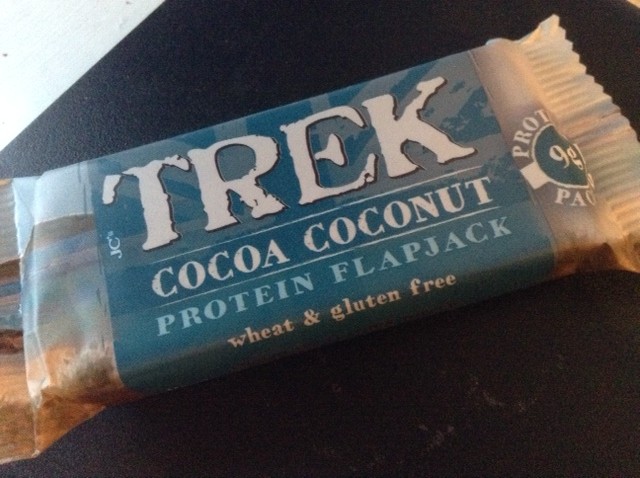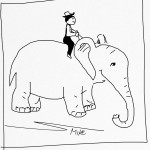Food is polarising. The divide between natural, good and slimming foods vs. processed, fat and bad foods is everywhere in our society. It’s taken for granted that some foods are ‘healthy’ and others are ‘unhealthy’.
The idea is that we should try to eat more of the healthy stuff and less of the unhealthy stuff. Which makes sense. But this categorising of food according to how ‘good’ or ‘healthy’ it is can also be our undoing.
As a result of this good-bad divide, health claims are everywhere. Low-fat, low-carb, low sugar, low calorie. Organic, gluten-free, all natural, wholegrain. High protein, high fibre, heart healthy. There’s something for everyone. And if a food carries a health claim, we tend to view it more favourably,[i] – often to the point where we won’t bother looking at the nutrition information,[ii].
Research suggests that when we view a food as healthy, we tend to underestimate its calorie content,[iii]. If it’s labelled ‘organic’ we’ll probably assume that it has fewer calories and can be eaten more often,[iv]. If it’s low-fat, we’ll likely overestimate the portion size,[v] and give ourselves the green light to eat more,[vi],[vii]. Indeed, one study showed participants ate about 35% more when they viewed a snack healthy vs. unhealthy,[viii].
This is where labels and our perceptions of foods betray us. Take a Mars Bar, for instance (because everyone knows that’s bad). A 51g bar provides around 229kcal. For typical dieters, eating one of these would signal the diet is blown. We’re a failure and the day’s a disaster. …“I’ll start over on Monday”.
Yet we can quite happily chomp our way through a ‘healthy’ bag of nuts or a cereal bar or two and mentally chalk the day up as a win. The Trek Cocoa Coconut Protein Flapjack (wheat & gluten free, by the way) has 236kcal. And during a recent trip to a supermarket I came across a high-protein bar called ‘Think Thin’. It had 240kcal.
Regardless of whether or not you view the food as healthy, calories do count. Sure the Mars Bar might be less nutritious than nuts or cereal bars, but if weight loss is your goal, one Mars Bar might actually represent a better choice than something ‘good’ – especially if you’re going to overeat that healthy choice. And if an occasional indulgence helps you enjoy your diet, stay on track and avoid binging, all the better.
Consider a choice between ice cream and celery. If they were the only foods available, I’d live longer eating only ice cream vs. only celery. If I’d just finished a marathon, the ice cream, again, would likely be the better choice. But if my goal was weight loss, and I’d already met my energy needs for the day, the celery would serve me best.
Don’t be fooled by the ‘health halo’. Whether a food is a good or bad choice has nothing to do with health claims, protein content or even calories. It has everything to do with context.
BIG IDEA: Categorising foods based on their perceived ‘healthiness’ may, for some people, encourage unhelpful behaviours that hinder weight loss.
TAKEAWAY:
- Try to view the properties of foods more objectively and in terms of nutrient density, calorie density, satiety and enjoyment rather than ‘good’ and ‘bad’.
- Consider the overall context of your diet over a wider time frame than just one meal.
ACTION STEP: Play the food morals game: Make a note of how many times foods are referred to in context of being good/bad. Magazines, TV, internet, friends, family, colleagues. They all count. And especially notice when you do it yourself! And for a better approach, Get the exact nutrition guidelines I share with my clients.
Always Keep Reaching!
References
[i] John C. Kozup, Elizabeth H. Creyer and Scot Burton. Making Healthful Food Choices: The Influence of Health Claims and Nutrition Information on Consumers’ Evaluations of Packaged Food Products and Restaurant Menu Items.
Journal of Marketing. Vol. 67, No. 2 (Apr., 2003), pp. 19-34
[ii] Williams P. Consumer understanding and use of health claims for foods.Nutr Rev. 2005 Jul;63(7):256-64.
[iii] Carels RA, Konrad K, Harper J. Individual differences in food perceptions and calorie estimation: an examination of dieting status, weight, and gender. Appetite. 2007 Sep;49(2):450-8. Epub 2007 Mar 4.
[iv] Wan-chen Jenny Lee, Mitsuru Shimizu, , Kevin M. Kniffin, Brian Wansink You taste what you see: Do organic labels bias taste perceptions? Food Quality and Preference. Volume 29, Issue 1, July 2013, Pages 33–39
[v] Faulkner GP, Pourshahidi LK, Wallace JM, Kerr MA, McCaffrey TA, Livingstone MB. Perceived ‘healthiness’ of foods can influence consumers’ estimations of energy density and appropriate portion size. Int J Obes (Lond). 2014 Jan;38(1):106-12. doi: 10.1038/ijo.2013.69. Epub 2013 May 7.
[vi] Brian Wansink and Pierre Chandon (2006) Can “Low-Fat” Nutrition Labels Lead to Obesity? Journal of Marketing Research: November 2006, Vol. 43, No. 4, pp. 605-617.
[vii] Kelly Geyskens, Mario Pandelaere, Siegfried Dewitte, and Luk Warlop (2007) The Backdoor to Overconsumption: The Effect of Associating “Low-Fat” Food with Health References. Journal of Public Policy & Marketing: Spring 2007, Vol. 26, No. 1, pp. 118-125.
[viii] Provencher V1, Polivy J, Herman CP. Perceived healthiness of food. If it’s healthy, you can eat more!Appetite. 2009 Apr;52(2):340-4. doi: 10.1016/j.appet.2008.11.005. Epub 2008 Nov 24.






Well said and excellently expressed. Thanks
Thanks Cindy!